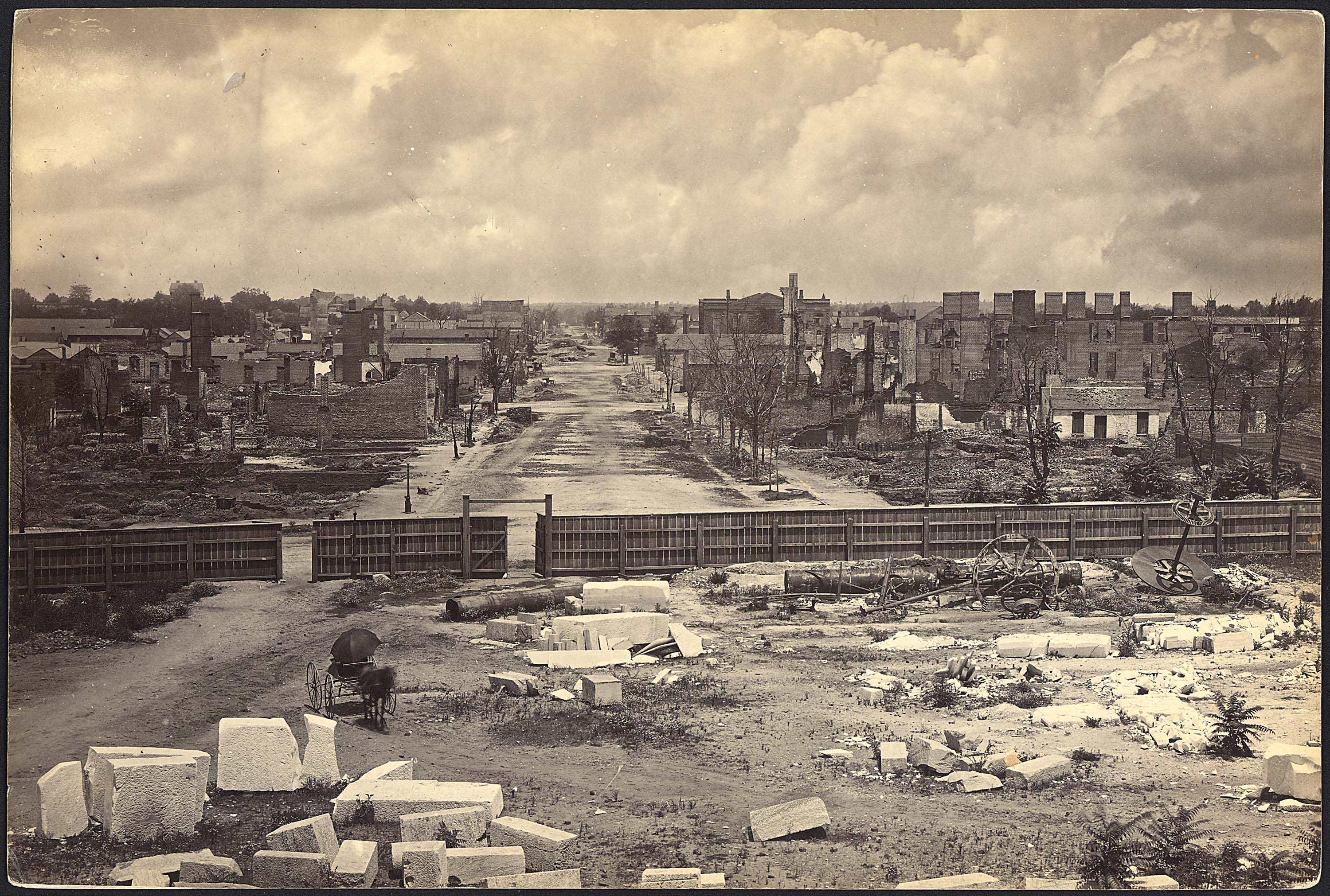The arts are key components in Burning of Columbia commemoration

 Although often overshadowed in the popular imagination by the burning of Atlanta, Ga., the burning of Columbia, S.C. on the evening of February 17, 1865, was a major event in American history and a defining moment in the history of the state, city and the Civil War. Through a multi-disciplinary coalition of organizations and agencies, Columbia is launching a two-month-long initiative to commemorate the 150th anniversary of the burning through lectures, tours, films, exhibits, literature, public discussions and visual and performing arts.
Although often overshadowed in the popular imagination by the burning of Atlanta, Ga., the burning of Columbia, S.C. on the evening of February 17, 1865, was a major event in American history and a defining moment in the history of the state, city and the Civil War. Through a multi-disciplinary coalition of organizations and agencies, Columbia is launching a two-month-long initiative to commemorate the 150th anniversary of the burning through lectures, tours, films, exhibits, literature, public discussions and visual and performing arts.
“Sherman’s march through South Carolina, which culminated with the burning of Columbia on February 17, 1865, was the most traumatic event in the history of much of the state, and for 150 years it has shaped how South Carolinians viewed the past and their place in it,” said Eric Emerson, director of the South Carolina Department of Archives & History. “This commemoration provides us with an opportunity to look at history through a different lens and to seek out the voices of those whose stories have been left untold for one and a half centuries.”
“This commemoration is an opportunity for all of us not only to mark this important moment in our history but also to take stock in how far we’ve come as a city and as a people,” said Columbia Mayor Steve Benjamin. “Columbia has literally risen from ashes over the past 150 years to become a model progressive city of the new South, and we want everyone to come out and help us celebrate.”
Columbia, the site of the original Secession Convention and capital of the first seceding state, was seen by the Union army as a special political target to encourage the surrender of the remaining Confederate forces. Columbia surrendered to the Union Army under the command of General William Tecumseh Sherman on February 17, 1865, and while the soldiers’ arrival signaled the imminent emancipation of enslaved African Americans in the city, the city suffered widespread destruction. The legacy of this physical loss is a pillar of the city’s common folklore and memories of the Civil War, and it remains hotly debated today.
With funding from the South Carolina Arts Commission and The Humanities CouncilSC, commemoration organizers are receiving direction from a group of historians representing the South Carolina Department of Archives & History, South Carolina African American Heritage Foundation, University of South Carolina, Richland Library, Historic Columbia, South Carolina Confederate Relic Room and Military Museum, and the South Carolina State Museum.
“This commemoration presents a special opportunity for Columbia’s cultural organizations to collaborate and create a wide-ranging, diverse series of events that explore our City’s identity,” said One Columbia for Arts & History Executive Director Lee Snelgrove. “It’s wonderful that academics and artists, historians and visionaries have come together to explore the complexity of Columbia and its past through artistic expression.”
Tuesday, February 17, 2015—the 150th anniversary of the burning of Columbia—will offer a full day of events. The University of South Carolina’s History Center, Institute for Southern Studies and Graduate School will present a symposium from 9 a.m. to 4 p.m. at the Columbia Museum of Art featuring prominent scholars who will shed fresh light on the meaning of the events 150 years ago. The symposium will also include a presentation on foodways of the 1860s, accompanied by a period-appropriate meal. At 4 p.m. that day, the S.C. Department of Archives & History will unveil an historical marker to commemorate the burning at the corner of Main and Gervais streets, and at 5 p.m., the official commemoration ceremony will begin in Boyd Plaza on the 1500 block of Main Street.
The ceremony will feature music from the Benedict College Concert Choir and the Sandlapper Singers, presentations by community leaders and historians, and the world premieres of two performance art pieces created for this commemoration. Following the ceremony, attendees are encouraged to explore exhibits, performances, tours, music, readings and more at venues along Columbia’s Main Street. More details about all commemoration events, as well as an overview of the history and significance of Columbia’s burning, are available on a new website, BurningofColumbia.com.
“We hope to encourage open dialogue with this project,” said Historic Columbia Executive Director Robin Waites. “The legacy of the burning is one of rebirth and reinvention. By reflecting on it, we can see how far we’ve come as a city and recognize how far we have still to go.”
About Columbia Commemorates:
Columbia Commemorates is a multi-disciplinary coalition comprised of Midlands and statewide organizations formed to plan and implement a citywide commemoration of this pivotal event. Through lectures; tours; film; visual, literary and performing arts; exhibits; public discussion; and large public gatherings, Columbia Commemorates will explore the events of February 17, 1865, as well as the immediate and long-term ramifications of the burning of South Carolina’s capital city. For more information about the commemoration and a calendar of events, please visit BurningofColumbia.com and follow on Facebook, Twitter and Instagram at @BurningofCola.
Image: Photographer George N. Barnard captured the desolation of Columbia, South Carolina’s Richardson (Main) Street shortly after the city’s burning in February 1865. Image courtesy National Archives and Records Administration.

